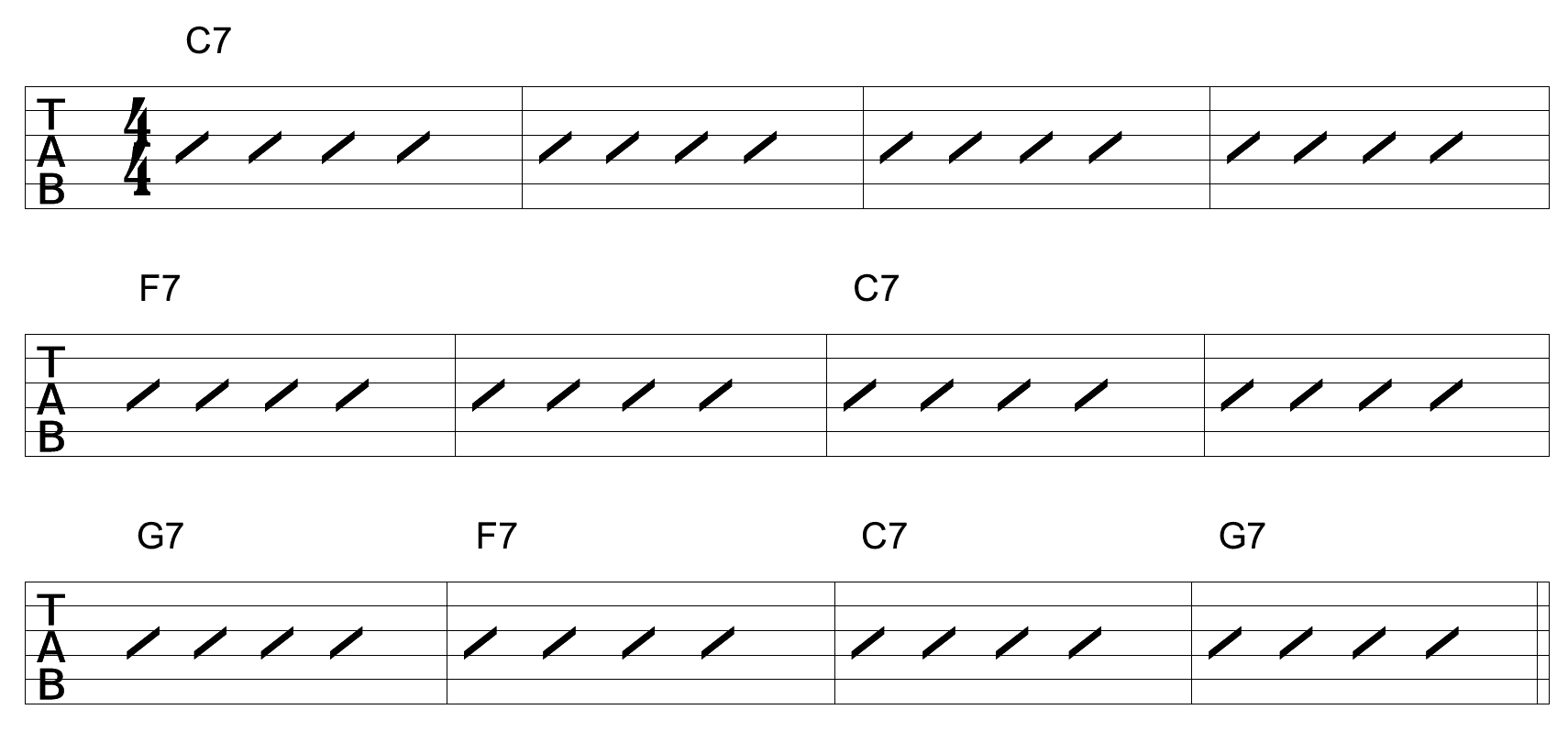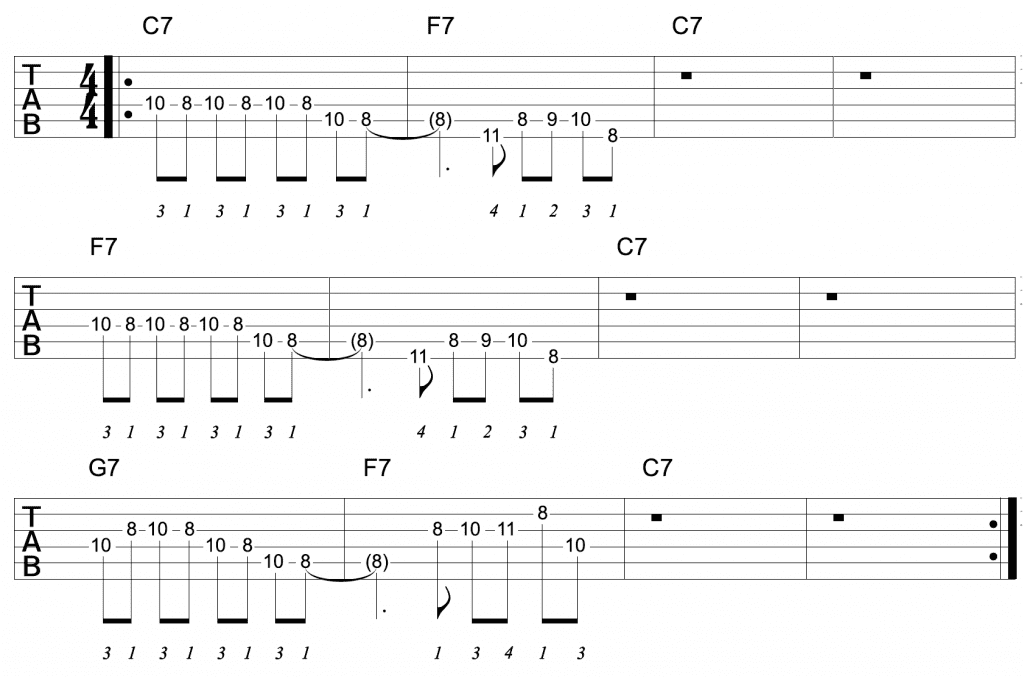How To Use Melody To Create Better, More Pro Sounding Blues Guitar Solos
Soloing over a 12 bar blues progression is a lot of fun to say the least. The most common thing to do is to jam out on the pentatonic scale when doing this, and that’s fine because it sounds great and is relatively easy to do. There are all kinds of cliched riffs and licks that sound great and you can get a lot of mileage from.
However, one often overlooked way to solo is to base it around a melody of some kind. So rather than playing wall to wall riffs, you have a simple melody that becomes the basis of your solo. The idea is to not simply repeat the melody over and over, but to use it as a starting point for your solo, creating variations and perhaps extensions to it.
As a result your solo should sound more like something that a singer would sing, rather than endless guitar riffs and licks. You can certainly include these too (ie. riffs and licks) but the point is to base your solo around the melody, and that is the point of today’s article.
Before we get started with this idea, you need to be somewhat familiar with the following 12 bar blues progression in C:
As a soloist, you need to be aware of the chords and progressions you are going to solo over. Many over look this, put the blinkers on so to speak, and just go for it.
While this can be a lot of fun, and ok to do when getting started, the more aware you are of the chords you are soloing over, the better the quality of your solos will be.
Using Melody In Your Blues Solos
Minor Melody:
The following is an example of a simple blues melody using the first pentatonic pattern in Cm starting at the 8th fret:
Notice in the melody above that I am playing the exact same phrase over the second 4 bars that I did over the first 4 bars. This is typical of a blues melody, however the phrase sounds different the second time compared to the first because the chords underneath it are different.
The last 4 bars provides an opportunity to answer the first and second phrase by creating a variation or extension to it.
Major Melody:
Let’s now look at a melody coming from the C major pentatonic scale, pattern 1, starting at the 5th fret:
In this melody, I have decided to repeat the same phrase 3 times over the 12 bar blues progression. Each time it sounds different because the chords I am playing the phrase over change. You might call this example more of a riff than a melody, however whatever you want to call it, it is a great starting point and foundation on which to build a solo.
How To Create Solos Around Melody Lines
Once you have a melody to work with, you want to create solos based around that melody. There is a fine line to this, as you don’t want to stray too far from the melody itself, or else you’ll just end up freely improvising with no real direction.
The key is to start with the melody and gradually add simple variations to it by either changing the length of the notes, in other words the rhythm of the melody, or the order of the notes, or both the order and rhythm of the notes. You can of course add notes to the melody too.
You may create a solo that is very heavily based on the melody, or you may create a solo that is only loosely based around the melody. It’s up to you.
In the video below you can watch me play both the minor and major melodies from above across a blues in C, as well as demonstrate soloing using these melodies as a basis to work from:
Youtube Video:
So take this idea of creating your solos around a melody. Just make sure you know the melody well first. It needs to be in your fingers, and in your ears. Then start gradually by changing little parts of the melody both rhythmically and melodically.
It will really bring direction and purpose to your soloing, and you will find you play much more melodically rather than just playing wall to wall riffs and licks all the time.
Author Box:
Simon Candy is a professional guitar instructor from Melbourne, Australia. In addition to teaching and training people locally to play guitar in the styles of jazz, blues, rock, and fingerstyle, Simon also specializes and offers tuition for acoustic guitar online




